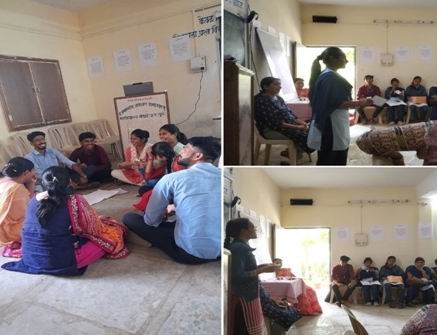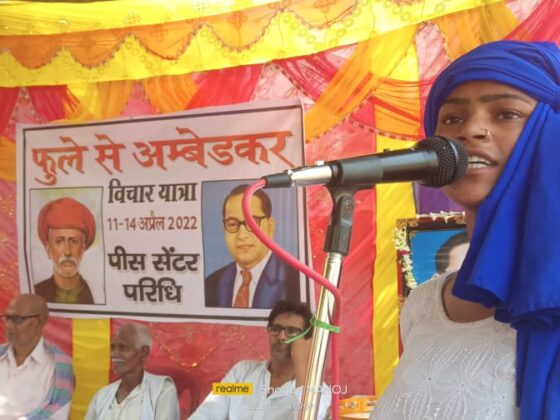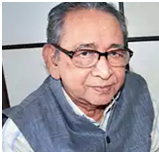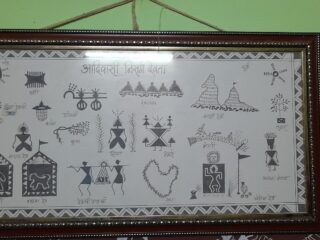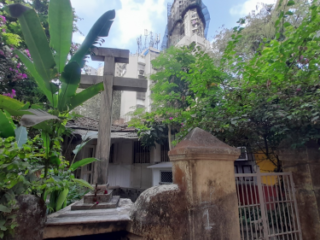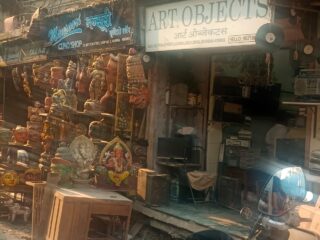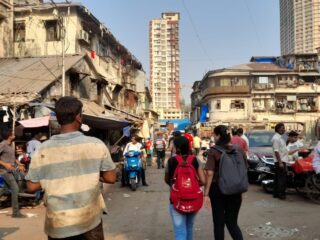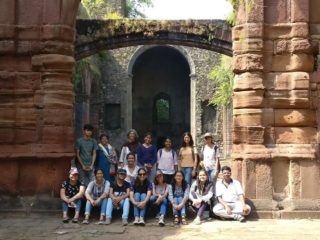“This Course made me reflect that we should see everyone as human beings beyond the lens of religious identity,” said Parimal. Parimal was a participant in the ‘Local Changemakers Course’ conducted for the students of Dr. Babasaheb Ambedkar College of Social Work in Morane village, Dhule district in Maharashtra from 10thto 13th May 2022. The Course was jointly organized by the Centre for Study of Society and Secularism, Mumbai, and Dr. Babasaheb Ambedkar College of Social Work. The Course focused on the area of freedom of religion and belief (forb).There was a positive transformation in the participants. They understood the importance of forb and responded to the threats to forb. Another participant, said, “The Course for the first time made us think about the violations faced by other communities to their freedom of religion, which we didn’t realize earlier”. Thirty-two students of social work (BSW, MSW) attended the Course. It helped them reflect on the importance of forb in a democracy, and how violations of the forb are linked with privileges and hierarchies in the society that a minority of elite enjoy. Rohit, another participant said, “many times we are told that our religion is supreme and it can’t be questioned. Whatever wrong is done under the name of religion is thus accepted. But through this Course, I realized that this approach is not correct. We should be aware of the wrong practices in our religion and if, under the pretext of religion, the freedom of religion of members of other community is violated”.
The Course through positive examples inspired the participants to imagine innovatively the different strategies to intervene positively to protect and promote freedom of religion. Giving her feedback on the Course Manjushree Desle said, “I was deeply affected on the first two days of the course about the violations of forb that take place around us. But I felt a solution is needed for the same. I went home each day after the course and discussed the learnings and concerns with my brother and mother. But they dismissed my concerns and asked me to keep my learnings limited to the workshop. However, when I learnt about the tactics and how each individual can make a difference, I felt very happy and not helpless”. It was heartening to witness how confidently and vehemently the young women participants in the Course were expressing themselves and wanted to make a change. Jaibala said, “this was workshop provided the women participants an opportunity to openly voice their opinions on this sensitive topic especially when homes are not a space which gives equality to women or equal voice in decision making”. Mahendra said, “The Course helped us to articulate and argue with relevant facts and perspective about freedom of religion. Earlier we didn’t know how to respond”. Hrishikesh said, “The course has given me the confidence to stand up against the freedom of religion. The exercises and the examples were very effective. Such courses should be conducted with school children because they have impressionable minds and internalize discriminatory attitudes. We can take up such modules for school children”
This feedback and change in the attitude of participants in this Course were very encouraging for the organizers. This course was organized in Ahmedabad earlier. The Local Changemakers Course is based on a module prepared by Katherine Cash of Stefanus Alliance International, with the help of a reference group from all continents. The Module consists of nine sessions. While the first five sessions focus on understanding and mapping forb and its violations including the sites of violations. The activities include soup of life, through which the participants identify the relevance of human rights as outlined in the UDHR with their lives. The activities and games help the participants to connect with their multiple identities. They help participants identify how some identities and status privilege a few while others may prove to be a disadvantage. Through role-play based on discussions within their groups, the participants portray varied situations where forb is denied. The web of life activity helps the participant understand how our lives are interconnected and that we are responsible for each other. The rest of the sessions focus on tactics and strategies to promote forb. The participants through various exercises identified homes, educational institutions, places of worship, and public spaces like roads where the forb is being violated. The participants also mapped the strategies to respond to different issues related to forb like attacks on places of worship, hate speeches, religious conversions, and gender discrimination related to religion.
Prof. Rachana Adsule, social activist and assistant professor, Dr. Jalinder Adsule, Principal of Dr. Babasaheb Ambedkar College of Social work, and Neha Dabhade, Deputy Director of Centre, facilitated the course for Study of Society and Secularism.
The Local Change makers Course is an interactive course – including group exercises, games, stories, discussions and role plays as well as presentations. Anyone with some experience of leading interactive learning processes with adults and young people can lead it. The facilitators´ guide and accompanying resources provide detailed guidance on how to run each session.
This course is a series of nine two-hour sessions, designed to enable groups of adults and young people to learn about, value and promote freedom of religion or belief (FORB) for all in their communities. This facilitator’s guide and all accompanying resources are freely available for anyone who is interested to conduct the course. Teaching material is available on the following link: http://www.forb-learning.org/changemakers
Part 1 of the course (sessions 1-5) focuses on developing knowledge and attitudes so that our heads and hearts are ready to become change makers. Participants learn about and explore their attitudes towards human rights and Freedom of Religion or Belief, and reflect on their attitudes towards people whose identities differ from their own. Participants also gain skills in context analysis.
In Part 2 of the course (sessions 6-9), participants learn about a range of tactics or methods that can be used to promote FORB and other rights, and are guided through a process of action planning for a FORB problem they identify. These sessions focus on skills and action.
- Session one divided in five parts – introduces human rights in general
|
Session One |
||
| Session Content | Activities | Time |
| Welcome and introduction | A welcome, participant introductions, a course presentation, and a ground rules exercise | 30 min |
| Plenary exercise: The soup of life | Explores human needs using the imagery of ingredients in a pot of soup. | 35 min |
| Walk and talk exercise: Human rights gallery | Helps participants to make connections between human needs and human rights. | 25 min |
| Presentation: Human Needs – Human Rights – Human Responsibilities | An introduction to human rights highlighting key agreements, the duties of states and the role ordinary people can play in making rights a reality. | 15 min |
| Closing discussion | Gives participants the opportunity to reflect on the input and wraps up the session. | 15 min |
| Total | 2 hours | |
This session focuses on developing participants’ knowledge of their human rights and positive attitudes towards human rights.
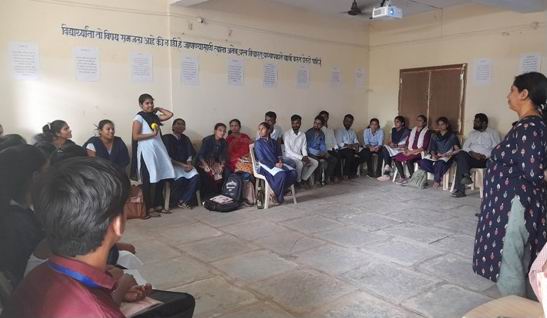
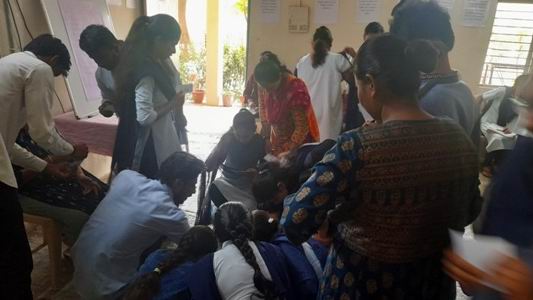

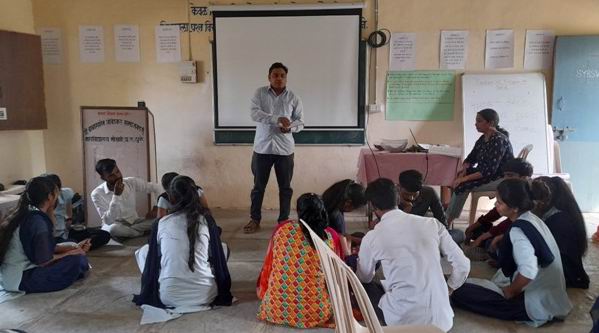
- Session two introduces Freedom of Religion of Belief in particular. This session focuses on developing participants’ knowledge and appreciation of the value of the human right to freedom of thought, conscience, religion and belief.
| Session Two | ||
| Session Content | Activities | Time |
| Opening exercise: Tell all | Participants throw a ball to each other, saying something they remember from the previous session before throwing the ball onwards. | 10 min |
| Story and discussion exercise: Once upon a time | This exercise is based around the story ‘The songs of the flute and the drum’. It has four parts: storytelling – plenary discussion – group discussion – feedback/ conclusion | 45 min |
| Presentation: Introducing Freedom of Religion or Belief | This presentation introduces the right to freedom of religion or belief and when it may be limited. It forms a key knowledge input for the course. | 15 min |
| Plenary discussion: Freedom of Religion or Belief | A discussion of the preceding presentation enabling participants to process learning from the presentation. | 10 min |
| Reflection and discussion exercise: FORB in my day | Helps participants to identify how they use their right to FORB in everyday life | 35 min |
| Concluding comments and changemakers story | Stories are included throughout the course to inspire participants | 5 min |
| Total | 2 Hours | |
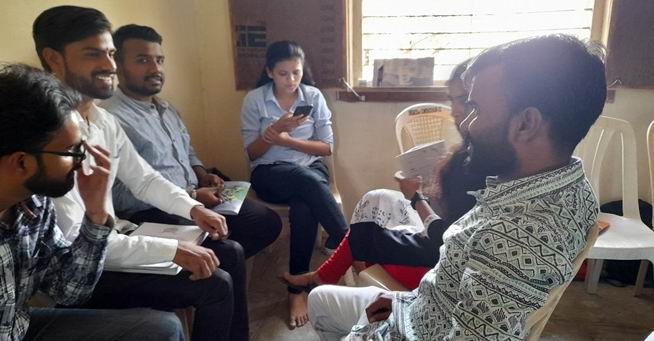
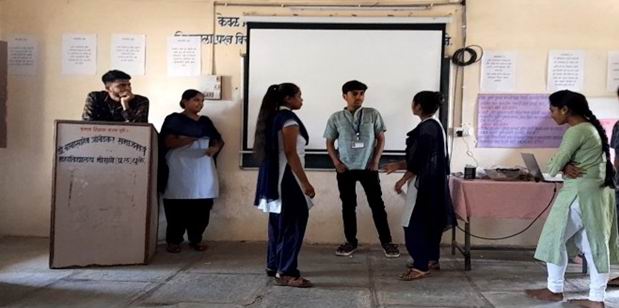
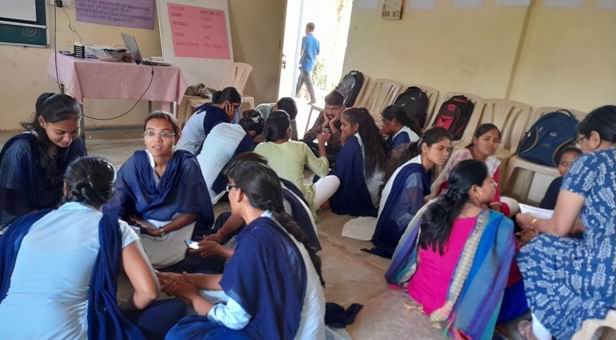
- Session three focuses on exploring our identities and issues of privilege and disadvantage.
| Session Three | ||
| Session Content | Activities | Time |
| Welcome | Session starts with welcome | 2 min |
| Opening exercise: Pot luck | Helps participants to think about issues of inequality and solidarity. | 15 min |
| Plenary exercise: One step forwards | Helps participants to think about who is affected by discrimination and other rights violations in their context. | 45 min |
| Energizer: Everyone swop chairs | A physical exercise in which people who agree with statements swop chairs. | 10 min |
| Plenary exercise: Our ocial identities | Helps participants to reflect on the multiple aspects of their identity and how they share many identities with people of other faiths. | 40 min |
| Concluding comments – Our ocial identities | These comments tie together the messages of the preceding exercises. | 8 min |
| Total | 2 Hours | |
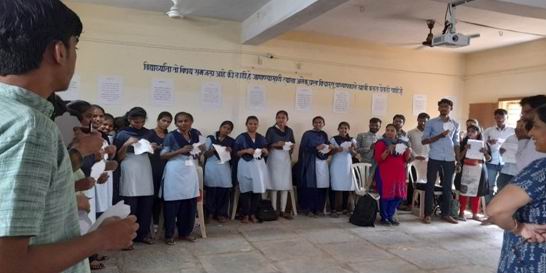

Students were asked to choose the cards of one the personality such as ‘a widow, a politician, a handicapped tribal youth, Hindu religious leader, etc. Students should come forward one step if they can get any facility such private hospital facility, they can vote, they can celebrate their festival freely etc. From this game students were made understand that even people starts from same point, they can’t reach at same place or they cannot get same facilities due to their social status.


- Session four explores violation of FORB and enables participants to practice identifying violations. This session introduces participants to different types of FORB violations and how people of all religions and none, in different parts of the world are affected. It also strengthens participants’ ability to identify typical FORB violations they might encounter.
| Session four | ||
| Session Content | Activities | Time |
| Welcome and introduction | Reminds people of what FORB is and introduces the session. | 5 min |
| Presentation: Understanding violations of FORB | A talk providing knowledge about different types of violations, with examples from around the world. | 20 min |
| Plenary discussion | An opportunity to reflect on and discuss the presentation. | 15 min |
| Drama exercise: Two-minute FORB mini-dramas | Gives participants the opportunity to practice identifying FORB violations in a fun, interactive way. | 75 min |
| Concluding comments and change makers story | Ties the session together | 5 min |
| Total | 2 Hours | |


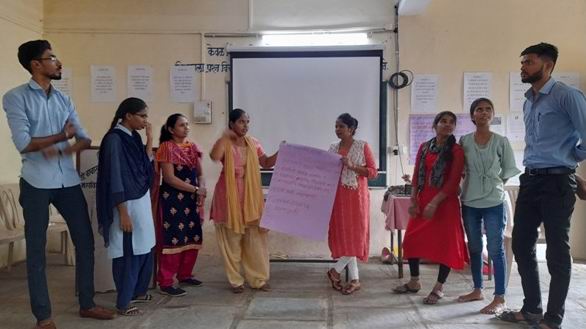
Session five enables participants to develop their own FORB context analysis, identifying FORB related problems in their communities. This session focuses on building skills in context analysis. By the end of the session, participants will be able to describe FORB related problems/violations faced by different people and groups in their community, identify how FORB violations affect women and girls in the community differently from men and boys, and empathize with people of other communities who are affected by FORB violations.
| Session five | ||
| Session Content | Activities | Time |
| Welcome and introduction | Reminds people of what FORB is and introduces the session. | 3 min |
| Opening exercise: The web of good | Participants identify the good things about our community. | 12 min |
| Presentation: How things get worse and how they could get better | Introduces a tool for context analysis called the three phases of persecution | 10 min |
| Mapping exercise: A FORB map of our town, part 1 | Participants develop the basis of a FORB context analysis through an interactive exercise. | 60 min |
| Energiser: Walk and stop | A fun, physical exercise in which people do the opposite of what they are told. | 5 min |
| Plenary discussion: A FORB map of our town, part 2 | Participants analyses what they developed in the first part of the exercise | 25 min |
| Concluding comments and changemaker story | Ends a session focused on problems on a hopeful note. | 5 min |
| Total | 2 Hours | |
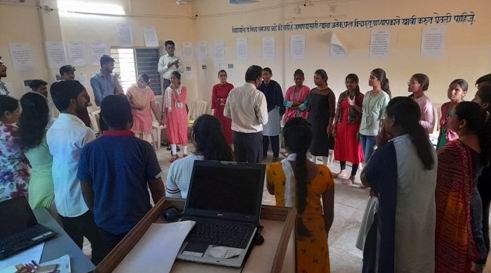

Sessions 6 and 7 are ‘paired’ – with shared learning objectives and a single learning process.
Sessions 6 and 7 focus on developing knowledge regarding tactics for the promotion of human rights. By the end of these sessions, participants will be able to give a simple explanation of the four different categories of tactics that can be used to promote human rights and give examples of actions for each type, express a desire to promote human rights in their community, have jointly identified at least five actions that they could take as individuals, and five actions that groups/organizations they are involved in could take, to promote FORB in their community.
| Session 6 | ||
| Session Content | Activities | Time |
| Opening exercise: Change maker story buzz groups | Kicks off the session with inspiration from others | 20 min |
| Reflection exercise: Bystanders and Healers | Enables reflection on why we sometimes act to stop injustice and sometimes don’t | 25 min |
| Individual exercise: Who am I | A drawing exercise, enabling reflection on the different contexts in which we can make a difference. | 15 min |
| Presentation: Introducing tactics | A key presentation using the imagery of fire to introduce four types of tactics for promoting rights (Emergency, Change, Building and Healing tactics). | 10 min |
| Group exercise with plenary feedback: Talking emergency tactics | Participants discuss ‘emergency’ tactics and brainstorm ways to use them | 45 min |
| Concluding comments | Joins the dots between different parts of the session. | 5 min |
| Total | 2 Hours | |
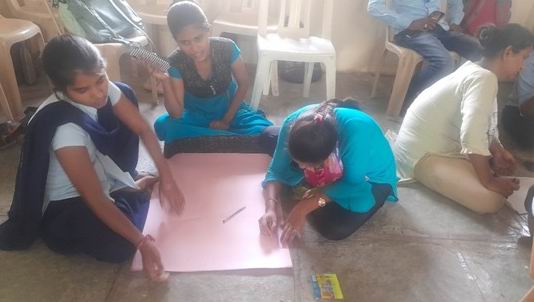

| Session 7 | ||
| Session Content | Activities | Time |
| Welcome and introduction | Reminds people of the four types of tactics presented in the previous session | 5 min |
| Group discussion: Talking tactics, part 1 | Participants discuss change, building and healing tactics and brainstorm ways to use them in their context | 65 min |
| Plenary exercise: Who am I? | A drawing exercise, enabling reflection on the different contexts in which we can make a difference. | 5 min |
| Energiser: Head to toe | A physical exercise in which participants copy the facilitator’s movements | 10 min |
| Plenary discussion: Talking tactics, part 2 | Plenary discussion of the action ideas coming out of the group work. | 40 min |
| Closing exercise: Emoticons | Participants share how they feel about what they have learnt using human sculptures | 5 min |
| Total | 2 hours | |
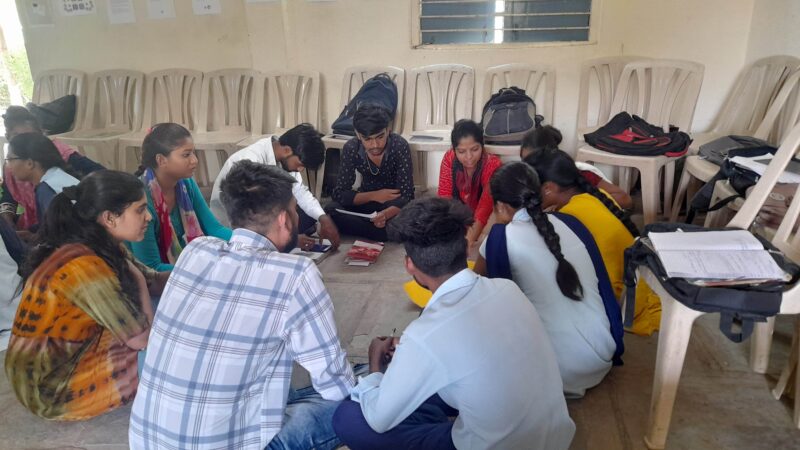

Sessions 8–9 are ‘paired’ – with joint learning objectives and a single learning process. In these sessions, participants use the knowledge and the action ideas they developed in previous two sessions to develop an action plan in the form of a visual journey towards change. This session focuses on developing action planning skills. By the end of session 8 and 9 participants will be able to, develop simple action plans for promoting FORB in the community, name concrete actions that they personally can take to promote FORB, express commitment to taking action to promote FORB. Where relevant, participants will implement their action plans after the training.
| Session 8 | ||
| Session Content | Activities | Time |
| Opening exercise: Compliment me | Reminds participants of the importance of everyone’s complementary contributions to the group and to making change. | 5 min |
| Plenary exercise: What’s the problem? | Participants identify a small number of problems to develop action plans for. | 52 min |
| Energiser: Make change | Fast, fun and physical – participants go from crouching and whispering to jumping and shouting the words ‘make change’. | 5 min |
| Presentation: Our change journey | Key input describing the process of developing an action plan, using the imagery of a journey | 10 min |
| Group exercise: Our change journey | Participants develop a visual action plan using the process they have learnt | 50 min |
| Concluding comments | 3 min | |
| Total | 2 hours | |


| Session 9 | ||
| Session Content | Activities | Time |
| Group exercise: Our change journey (continued) | Participants continue developing the action plans begun in session 8 | 30 min |
| Plenary discussion: Our change journey – presentations and feedback | Groups present and discuss their action plans. | 15 – 20 min |
| Energiser: Changemaker sculptures | The groups use their bodies to create a collaborative human sculpture representing their action plan | 5 min |
| Plenary discussion: Where do we go from here? | Participants discuss what action they want to take personally and collectively after the course. | 25 min |
| Evaluation exercise: Head, heart, hands | Participants reflect on what they are taking with them from the course | 20 min |
| Celebration | Celebrate the knowledge, attitudes, skills, and relationships developed during the course. | 10 min |
| Total | 2 hours | |
